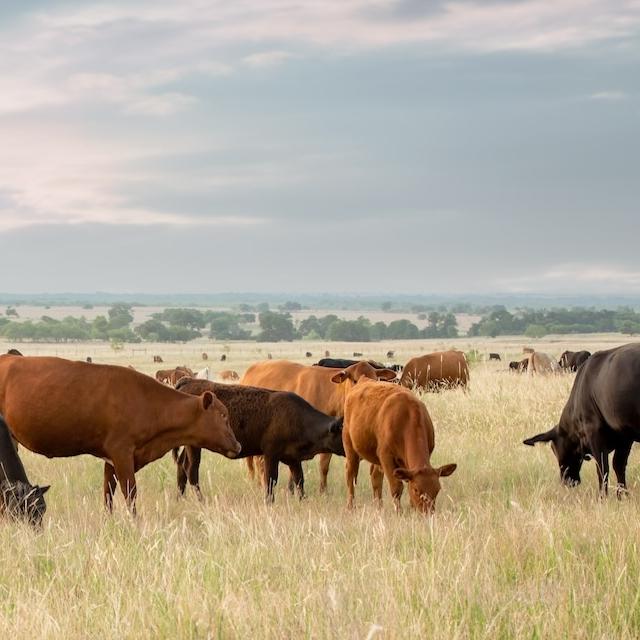
Faculty Q&A: What Exactly is a Screwworm?
Jeff Geider describes the pest and tells how TCU Ranch Management is preparing ranchers for the future.
 The New-World screwworm, a parasitic fly capable of devastating livestock and wildlife
populations, was once eradicated from the United States through rigorous control.
But recent reports show the fly is headed back north again, raising concern among
ranchers and agricultural experts.
The New-World screwworm, a parasitic fly capable of devastating livestock and wildlife
populations, was once eradicated from the United States through rigorous control.
But recent reports show the fly is headed back north again, raising concern among
ranchers and agricultural experts.
Jeff Geider, William Walt Matthews Director of the TCU Institute of Ranch Management, has more than a decade of experience working in Panama and has studied the insect’s return and the international efforts to control its reach. He recently shared insights on how the screwworm is spreading, why it matters and how TCU is preparing the next generation of ranchers to address real-world threats.
Can you provide a basic explanation of the New-World screwworm for our readers?
The New-World screwworm is a parasitic fly species native to North, Central and South America, distinguishing it from the Old-World screwworm, which is found in Africa and parts of Asia. The scientific name, Cochliomyia hominivorax, actually translates to “man eater.” It’s a fly, and the female flies lay eggs in living mammal tissue – wounds, mucus membranes and that sort of thing. One of the things that makes it unique is that the host has to be living.
What is the current status of the species in the U.S.?
To my knowledge, we don’t have any reported cases in the United States. That’s one of the reasons why the attention is ramped up so aggressively, to prevent a recurrence like we saw back in the 1940s, ’50s and ’60s, when there was a major infestation throughout the southwestern United States. The latest reports indicate it’s about 600 miles south of the Texas border.
What are the measures that are in place to mitigate or control its spread?
When we first eradicated this pest in the United States, there was a massive joint effort between the United States and MIDA, which is the agricultural ministry in Panama. They built sterile fly plants, where they bred these flies, rendered them sterile and then released those flies in massive amounts. When the flies would breed, the females would lay eggs, but the eggs would not be fertile. So they were effectively wiped out, but that lapsed, and now we’re back in the prevention stage.
The fly comes through the Darién Gap, which located in the very southern part of Panama that separates Panama from the Colombian border. Right after the pandemic in 2021, there was a lack of surveillance in this area, and, with a lack of sterile fly production due to the pandemic, the fly came back. This fly moves quickly and has now made its way into Mexico.
What risks do these flies pose to ranchers and the economy?
There is a huge risk to not only ranchers but also the whole wildlife industry, which is a major economic pillar, particularly in the Southwest and Texas. We’re talking about a billion or more dollars in potential destruction. And that’s just the economics. There are ramifications for other animals and, while rare, humans.
How does the TCU Ranch Management Program prepare future ranchers to handle these types of situations?
The TCU Ranch Management Program is unique in a lot of ways, but especially in pedagogy and how we teach methodology. Part of our curriculum is actually putting students in real-time, real-case scenarios where they learn through projects, and we require them to actually incorporate managerial systems that address these types of situations. It could be a climatic event or economic event that could potentially be catastrophic to the production system. In fact, we actually started addressing screwworm last spring when I came back from Panama, where I’ve done a lot of related work in the last 14 years. We had quite a few classes that raised the level of awareness for these younger students who have never seen it before. And while they may not be able to prevent it and stop it entirely, they need to know how to identify it and then go and treat it.
Another unique part of TCU Ranch Management is that we have graduates in almost all of these areas. We’re talking to former students of mine who are ranching in Chiapas and Panama and in Guatemala and Nicaragua. For example, one of our ranchers in southern Mexico has a complete protocol where he treats all of his calves to prevent screwworm. It’s a completely different system than what we have here in the United States, but the fact that we have contact with actual producers throughout the region is crucial to teaching the next generation of students.
